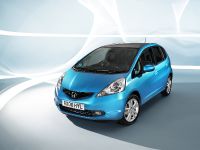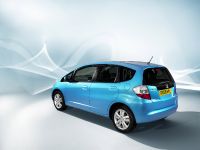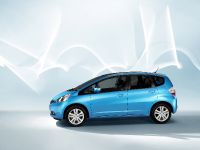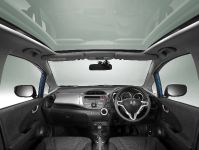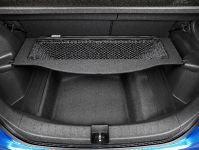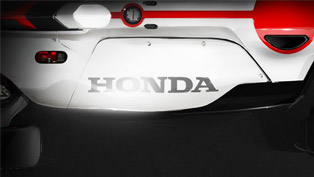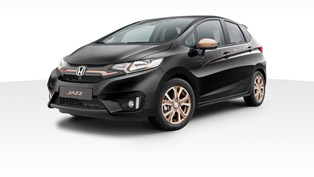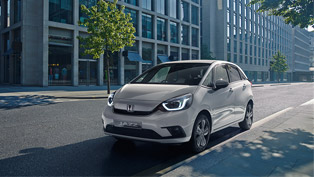More Space, Better Versatility, Smarter Looks - Honda takes the all-new Jazz to the next level
Honda will follow-up one of the most successful models in supermini history when its all-new Jazz goes on sale this Autumn. At a time of rising fuel prices and financial instability, a range of low emission, high economy petrol engines makes the new model an attractive option for the increasing number of motorists looking to downsize.
By enhancing its strongest qualities, Honda engineers have taken the innovative design and versatility of the current Jazz to the next stage. Greater flexibility, more interior space and lively, but economical engines raise the bar even further in a class that's struggled to match the Jazz for customer satisfaction and reliability.
The hugely-popular Jazz was always going to be a hard act to follow – simply because of the resounding success of the current car. As well as attracting consistently strong demand from customers in every year since its 2002 launch, the Jazz has also won over 30 industry awards, making it one of the most celebrated models ever.
The sequel builds on this success, with a more stylish, contemporary exterior design to appeal to a broader audience. A slightly larger body style brings better visibility and means Jazz is even more spacious.
And the famous Honda Magic Seats are back – but now they dive down in one action, making carrying large loads even easier. Their versatility is equalled by a new Double-Trunk boot feature in the luggage bay that can be configured in four ways to accommodate different-sized loads. Total luggage space in 1.4 models (with Double Trunk) now measures a huge 399 litres (VDA) – greater than some MPVs and bettering all in the B-sector.
Engines Two new, low emission petrol engines are designed to appeal to customers who might be downsizing, as well as those looking to achieve fuel economy comparable to diesel models. Adopting Honda's i-VTEC variable valve timing technology, the 90PS 1.2-litre and 100PS 1.4-litre engines deliver lively performance with exceptional economy.
The 1.2-litre engine achieves an exceptional 55.4mpg (combined), while CO2 emissions are also improved, at 120g/km. It's a similar story with the new 1.4-litre engine. Compared to the previous i-DSI unit which produced 83 PS and 119Nm, power is up to 100PS and torque is 128Nm with fuel economy from 54.3mpg (combined) for the manual model. CO2 exhaust emissions are as low as 123g/km.
There's also the option of Honda's next-generation 6-speed i-SHIFT automated manual transmission on the 1.4-litre engine – a first in this class. The unit is a development of the system first fitted to the Civic, with improvements made including; reduced gear change times, smoother shifts and more intelligent automatic mode shift logic. Equipped with this gearbox, the Jazz achieves an impressive 54.3mpg with some models recording an incredible 120g/km of CO2 emissions, putting it in VED Band B, along with the 1.2-litre car.
The new SIL (Shift Indicator Light) fitted to manual models, similar to that found on the new Accord, provides a visual prompt of the best gear shift points to maximise economy.
Ride comfort has been much improved through a number of suspension revisions, which contribute to the ‘big car feel' of the new Jazz. Meanwhile, a longer wheelbase (by 50mm) and wider front track (by 35mm) give the car greater agility. Honda's stability assist, VSA, is now available across the range.
Stopping ability has been increased with larger brake front callipers, and the brake pedal has been tweaked to improve feel. Front ventilated discs and rear discs are matched with ABS, EBD and Brake Assist.
The overall height of Jazz remains the same (1,525mm) but the length of the car has increased slightly by 55mm (to 3,900mm) and it is also slightly wider, by 20mm (to 1,695mm).
Getting in and out is now much easier, thanks to wider-opening rear doors which open in three steps – just like their front counterparts – for added convenience in tight parking spots.
Interior Once inside, the cabin is now even more spacious for driver and passengers, with greater headroom and an improved driving position.
The slightly increased exterior length and width have helped improve passenger space, as has the ‘pushing forward' of the windscreen. Rear seat passengers now have 37mm greater kneeroom, while the distance between front and rear passengers is up by 30mm. The slightly wider body also means shoulder room increases by 44mm in the front and 43mm in the rear.
Visibility gets a considerable boost, too. Reduced width A-pillars, a larger windscreen and quarter windows three times the size of those in the previous model make for more relaxed driving, while retractable rear headrests ensure the view out of the rear window is now totally unobscured.
Increasing the feeling of spaciousness and freedom, EX models are equipped with a panorama roof that extends over the rear seats for an expansive sky view. Heat absorbing glass and a power sun shade ensure a comfortable cabin environment.
Elsewhere, high quality materials, stylish design and tasteful colours give the cabin an upmarket feel. More comfortable front seats have been fitted, along with a height adjustable driver's seat and a steering wheel that's adjustable for reach and rake on 1.4 models.
A single CD/radio is integrated into the fascia, offering MP3/WMA playback and speed-dependent volume adjustment. In 1.4 EX models, a USB adapter is located in the centre console storage box, which enables fifth generation iPods and a variety of other portable music devices to be played via the Jazz's audio system.
Safety The new Jazz benefits from Honda's ACE body structure, a concept that is being progressively rolled out across the Honda range. In particular a front polygonal main frame helps to prevent misalignment between vehicles of different sizes and construction and multiple energy absorbing pathways disperse impact energy to prevent cabin deformation.
Dual front and side airbags are standard on all models, as are full length side curtain airbags and three-point seatbelts in all five seating positions (those in the front have dual-stage pretensioners).
The front passenger airbag can also be deactivated to allow a rear facing child seat to be fitted to the front seat and for the first time Jazz is equipped with seatbelt reminders for both the front and rear seats. Front seats are also fitted with active headrests to minimise the potential for whiplash injuries.
